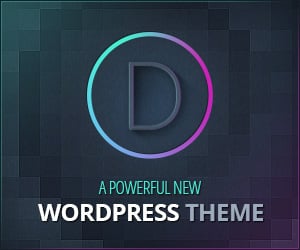I believe the options for a web developer to create a website are:
- Use a targeted theme with WordPress (eg a restaurants theme) and use the benefits and constraints that this option presents
- Employ a page builder with WordPress, such as Avada (US$60 per site) or Beaver Builder Pro (US$199 for unlimited sites)
- Use the native HTML / CSS approach – free if you use Notepad++ (for example) for your source code editor
- Hybrid option: develop HTML / CSS / JavaScript code natively and import it to Beaver Builder on WordPress or to a free “blank” theme.
- Of course a myriad other CMS options such as Drupal, Joomla!, etc.
This discussion focuses on the use of WordPress.
Client-side web development: A hybrid option
I know the question of whether to use a Content Management System (CMS) has been addressed many times, but I haven’t seen the idea of a hybrid solution addressed. Web discussions talk about the advantages of using a CMS like WordPress to develop a website: shorter times to create a site, capability for the user to change content, etc. They also mention the disadvantages such as longer page load times due to somewhat bloated code.
I initially started developing websites for small business using the native html platform (html, CSS, JavaScript, a little PHP). Until a colleague said I should be using WordPress as it just takes too long and costs too much to create a site otherwise. Taking his advice, and using the Avada Theme, I was amazed to see how easy and quick it was to add functionality – eg WooCommerce plugin to add eCommerce – to my site.
After using Avada / WordPress for some months I read about Beaver Builder (BB) and, though it’s rather expensive, I bought it. The outlay gave me unlimited use. This gave me a fairly intuitive, visual interface. BB let’s you add HTML, CSS and JavaScript to your website.
But after using BB for a while I started to feel hemmed-in, that the number of “modules” or features in Beaver Builder constrained me too much. I decided to redevelop my own website around this time and thought “let’s go back to basics” and do it in HTML and CSS. I chose a graphic for the header of the site which I was convinced I could not have done in BB and WordPress (see Figure 1 below). You can see my website at www.webthemes.com.au.

Figure 1
I really enjoyed carrying out that development. Having finished my website re-write I was left wondering what platform I would use in the future. But when a client wants an online shop for example, why would I want to create a database, write the PHP, and write the front-end? And I asked myself whether the graphic I had created in HTML (Figure 1) could be done in BB.
So I simply copied the HTML and CSS from PHPStorm – where I do my native coding – into the Beaver Builder environment. It worked fine.
To me this was a discovery. It seemed now that I have the best of two worlds. I can, where it seems easier to do so, develop a website page or component in PHPStorm in local host, then copy it to BB. Here I can take advantage of the WordPress framework.
Use a blank theme
I recently started reading about WordPress “blank” themes and I came across the site https://torquemag.io/2017/11/top-10-blank-wordpress-themes-impressive-advantages/. I thought this looked interesting so I downloaded a blank theme, thereby creating my own theme called unsitely. I copy/pasted the same HTML and CSS as with the Beaver Builder experiment.
Whereas with BB I used its theme and was under its control, I was now into different territory – with a different skill set required to finish the job of creating the theme. I didn’t finish the exercise of creating the theme, but it gave me food for thought.
Author
Trevor Reeves












Add Comment